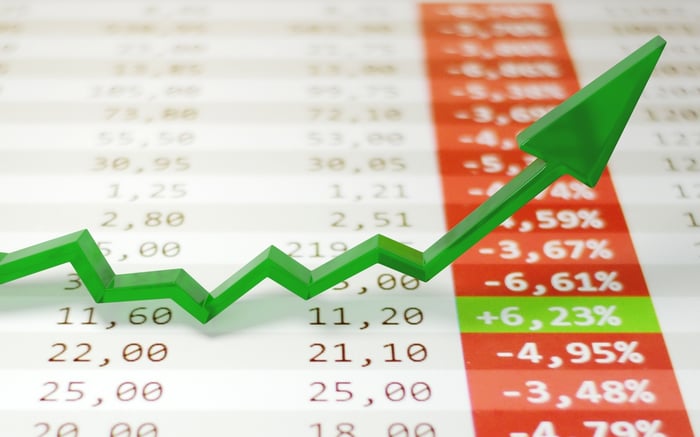The company reversed course on its logo. Can it also turn around its faltering shares?
Well, that was fast.
Just one week after revealing a new logo that was nearly universally panned, Cracker Barrel Old Country Store (CBRL 8.01%) announced on Tuesday that it was scrapping its plans to change the logo. On Wednesday, the company’s shares — which had tumbled more than 10% after the new logo was revealed — had rebounded by 8.0% by the time the closing bell rang.
For investors who bought the dip, it’s a pretty good outcome. But is it too late for everyone else to buy in?
Why shares were down
On Aug. 19, Cracker Barrel launched a fall campaign it dubbed “All the More.” It was mostly a pretty standard seasonal restaurant campaign. It announced a partnership with country music star Jordan Davis and introduced some seasonal fall menu items like a cinnamon roll skillet and Uncle Herschel’s Favorite (“back by popular demand”).
However, the campaign also featured “updated creative,” including a change to the restaurant’s logo that removed the eponymous barrel and the iconic “old timer” figure — referred to by many as “Uncle Herschel” — leaving only an orange background and the words “Cracker Barrel.”
The backlash was immediate and intense, with many criticizing the stripped-down logo as generic or too reminiscent of other restaurant logos, such as Denny’s or Golden Corral. On Tuesday, even President Donald Trump weighed in on Truth Social, “Cracker Barrel should go back to the old logo, admit a mistake based on customer response (the ultimate Poll), and manage the company better than ever before.”
Despite the negative reactions, Cracker Barrel initially doubled down on its logo decision, with a spokesperson saying the feedback had been “overwhelmingly positive and enthusiastic about the refreshed dining and shopping experience” (a statement which, you’ll notice, pointedly does not say anything about feedback regarding the logo specifically), and attributing the backlash to a “vocal minority.”
However, by Tuesday, shortly after President Trump’s post, the company changed its tune. “We thank our guests for sharing your voices and love for Cracker Barrel. We said we would listen, and we have,” the company said. “Our new logo is going away and our ‘Old Timer’ will remain.” The new logo has been removed from the company’s website.
Does it matter for the stock?
If you believe that any publicity is good publicity, this ruckus might result in some short-term positives for the company. Cracker Barrel’s name has been in the news (and, more importantly, in the zeitgeist) for a week now, and it’s even making me hungry for hash brown casserole. Many people are praising management for its ultimate decision. This could be a golden opportunity for the company, as Trump suggested in his Truth Social post, writing: “They got a Billion Dollars worth of free publicity if they play their cards right. Very tricky to do, but a great opportunity.”

Image source: Getty Images.
That publicity might increase foot traffic to Cracker Barrel’s stores in the short term, which would be a welcome boost for the company. In its most recent quarter, same-store restaurant sales increased by just 1%, while same-store retail sales declined 3.8%. Overall, revenue has been stagnant since the pandemic lockdown reopenings, only up 5.7% since 2022. Net income has slipped by more than 50% and profit margins have declined to just 1.7%.
Those metrics aren’t just bad, they’re worse than most of its peer companies, including Brinker International (EAT -3.52%), which owns Chili’s and Maggiano’s; and Darden Restaurants (DRI 0.14%), which owns Olive Garden and Cheddar’s, among many others. Perhaps the problem is the breakfast: Dine Brands (DIN 1.15%), which owns IHOP and Applebee’s, has struggled with a similar drop in profits, but even Dine’s profit margin is above 5%.
In short, it will take more than the publicity surrounding this logo controversy to fuel a long-term turnaround at Cracker Barrel. According to CEO Julie Felss Masino, the company is “in the middle of a three-year transformation” that’s expected to cost $700 million and include changes to the company’s advertising, menus, and store layouts. If this is how well things are going, investors will face a long and rocky road, no matter what Cracker Barrel’s logo ends up looking like.





















